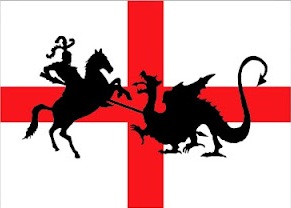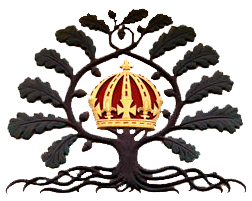Bernard of Clairvaux’s Writings on Violence and the Sacred
 Embryo Parson Posted on
Embryo Parson Posted on  Wednesday, August 16, 2017 at 10:19PM
Wednesday, August 16, 2017 at 10:19PM Here. Abstract:
Monk, exegete, political actor and reformer, Bernard of Clairvaux (1090-1153) was not just a man of his times; he was a man who shaped his times. Bernard’s writings on Christian morality and the transformation of the human spirit in the pursuit of God reverberated in his time and have remained influential through the Protestant Reformation and into the modern era. The apparent contradiction between his writings on love and those on warfare has resulted in an artificial separation of his writing by scholars; those who are studying monasticism or Bernard in general tend to ignore or gloss over his writings on violence, while those studying the Crusades, warfare, or masculine identity often only look at those writings while ignoring Bernard’s less topical work. This separation of his writings, though convenient, conceals a deep continuity which runs throughout Bernard’s corpus and cheats Bernard of his intellectual completeness. This paper explores Bernard’s writings on the issues of physical and spiritual violence, demonstrates that they are a coherent part of his wider set of beliefs and shows that, when studied side by side with his other writings, they clarify his thoughts on acceptable monastic and Christian life.
THIS is the Bernard I keep talking about and from whose writings I base my argument for the "Bernard Option." Mark, learn, and inwardly digest, and then note the complementary ideas of C.S. Lewis in his essay "The Necessity of Chivalry":
The word chivalry has meant at different times a good many different things - from heavy cavalry to giving a woman a seat in a train. But if we want to understand chivalry as a distinct ideal from other ideals - if we want to isolate that particular conception of the man comme il fant which was the special contribution of the Middle Ages to our culture - we cannot do better than turn to the words addressed to the greatest of all the imaginary knights in Mallory's Morte Darthur. "Thou wert the meekest man, says Sir Ector to the dead Launcelot. "Thou were the meekest man that ever ate in hall among ladies; and thou wert the sternest knight to thy mortal foe that ever put spear in the rest."
The important thing about this ideal is, of course, the double demand it makes on human nature. The knight is a man of blood and iron, a man familiar with the sight of smashed faces and the ragged stumps of lopped-off limbs; he is also a demure, almost maidenlike, guest in a hall, a gentle, modest, unobtrusive man. He is not compromise or happy mean between ferocity and meekness; he is fierce to the nth and meek to the nth. When Launcelot heard himself pronounced the best knight in the world, "he wept as he had been a child that had been beaten."
What, you may ask, is the relevance of this ideal to the modern world. It is terribly relevant. It may or may not be practicable - the Middle Ages notoriously failed to obey it - but it is certainly practical; practical as the fact that men in a desert must find water or die. . . . (Brute heroism without mercy and gentleness) is heroism by nature - heroism outside of the chivalrous tradition.
The medieval knight brought together two things which have no natural tendency to gravitate toward one another. It brought them together for that very reason. It taught humility and forbearance to the great warrior because everyone knew by experience how much he usually needed that lesson. It demanded valour of the urbane and modest man because everyone knew that he was as likely as not to be a milksop. . . .
If we cannot produce Launcelots, humanity falls into two sections - those who can deal in blood and iron but cannot be "meek in hall", and those who are "meek in hall" but useless in battle - for the third class, who are both brutal in peace and cowardly in war, need not here be discussed. When this dissociation of the two halves of Launcelot occurs, history becomes a horribly simple affair. . . . The man who combines both characters - the knight - is not a work of nature but of art; of that art which has human beings, instead of canvas or marble, for its medium.
In the world today there is a "liberal" or "enlightened" tradition which regards the combative side of man's nature as a pure, atavistic evil, and scouts the chivalrous sentiment as part of the "false glamour" of war. And there is also a neo-heroic tradition which scouts the chivalrous sentiment as a weak sentimentality, which would raise from its grave (its shallow and unquiet grave!) the pre-Christian ferocity of Achilles by a "modern invocation". . . .
(However), there is still life in the tradition which the Middle Ages inaugurated. But the maintenance of that life depends, in part, on knowing that the knightly character is art not nature - something that needs to be achieved, not something that can be relied upon to happen. And this knowledge is specially necessary as we grow more democratic. In previous centuries the vestiges of chivalry were kept alive by a specialized class, from whom they spread to other classes partly by imitation and partly by coercion. Now, it seems, the people must either be chivalrous on its own resources, or else choose between the two remaining alternatives of brutality and softness. . . . The ideal embodied in Launcelot is "escapism" is a sense never dreamed of by those who use that word; it offers the only possible escape from a world divided between wolves who do not understand, and sheep who cannot defend, the things which make life desirable. . . .
The time for milksoppiness is over.
 Anglican Spiritual Life,
Anglican Spiritual Life,  Benedict Option,
Benedict Option,  Benedictine Spirituality,
Benedictine Spirituality,  Bernard Option,
Bernard Option,  Bernard of Clairvaux,
Bernard of Clairvaux,  C.S. Lewis,
C.S. Lewis,  Chivalry,
Chivalry,  Christian Culture,
Christian Culture,  Christian Pacifism,
Christian Pacifism,  Christian Resistance Theory and Praxis,
Christian Resistance Theory and Praxis,  Crusades,
Crusades,  Culture Wars,
Culture Wars,  Man-glicanism,
Man-glicanism,  Muscular Christianity,
Muscular Christianity,  Political Theory and Praxis,
Political Theory and Praxis,  Reformed Episcopal Church
Reformed Episcopal Church 




Reader Comments